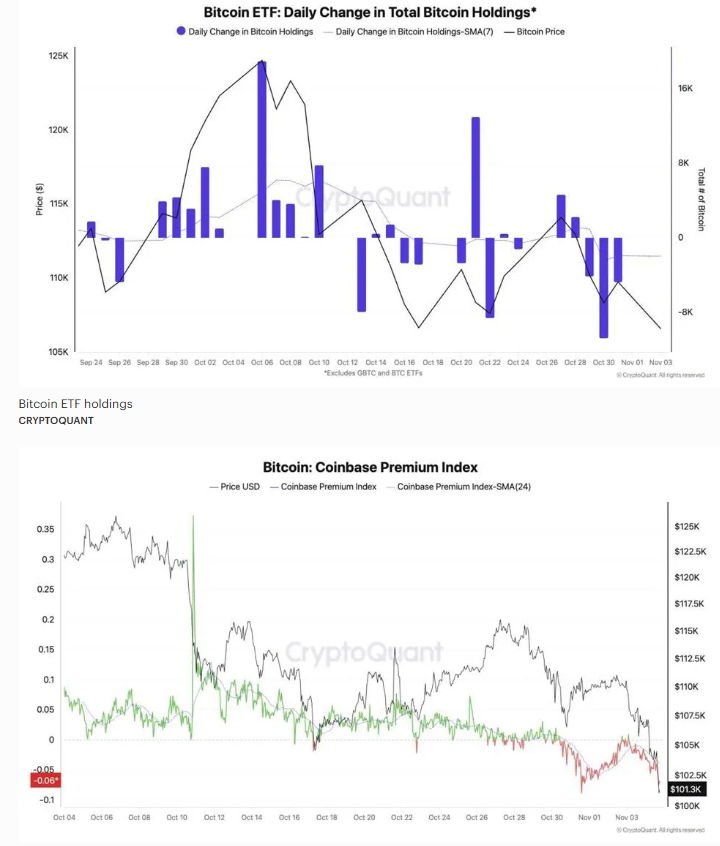Bitcoin prices fell below the key psychological level of $100,000 on Tuesday, November 4, hitting their lowest since June as the market suffered from fatigue.
“The best explanation for BTC’s recent decline is simply depletion,” Tim Enneking, managing partner at Psalion, said in an email. “There’s no bad news, but the market is a little tired.”
He made the remarks on a day when the world’s most famous digital currency fell to around $99,000, according to TradingView Coinbase data. At this point, it was trading at its lowest level since around June 22nd.
Eneking further clarified the situation, highlighting that the crypto market faces multiple challenges.
“Caution is needed because U.S. interest rates, continued concerns related to the trade war that the U.S. has declared for the rest of the world, doubts about whether the trade stock market can continue to set or even maintain the new records we’ve seen this year, and Treasury companies selling off some of their inventory to cover operating and debt costs are all creating headwinds, so we need to be careful.”
Julio Moreno, head of research at CryptoQuant, also outlined several challenges facing the market.
Asked to explain the cause of the recent price decline, he said on Telegram: “It appears to be an additional correction as fundamentals remain weak after October’s large liquidation event.”
First of all, he emphasized that spot demand for Bitcoin continues to decline.
The graph below from CryptoQuant illustrates this development.
He also highlighted changes in the world’s largest economy, saying, “Investors are also reducing demand for Bitcoin in the US, as seen in negative ETF flows and negative Coinbase price premiums.”
The two graphs below illustrate this.
market stability
Other analysts focused on the market gaining greater stability after some notable losses experienced in recent weeks.
Commenting on these issues, Brian Huang, co-founder of fintech company Glider, said in an email that “the market is stabilizing after last week’s turmoil.”
“The most interesting thing is not the liquidation itself, but how the capital was redeployed,” he added. “We see stablecoins continue to dominate the market as investors chase yield and safety, but on-chain activity is already showing signs of quiet accumulation.”
“If Bitcoin can maintain its momentum above important levels, this decline may be remembered as a realignment rather than a crash,” Huang concluded.
Hacking DeFi protocols
Huang also spoke about the repeated breaches that DeFi protocols have suffered recently. Recently, a DeFi protocol’s balancer was exploited, resulting in the loss of over $100 million in funds.
Marcos Billiato, Co-Founder and CEO perfumesaid, “From my point of view, the Balancer hack has met with a tough moment,” highlighting the important role this development played in the market.
“Ethereum is already down about 7-8% and liquidity is still thin, so even a small selling pressure caused a big move across the market,” he continued. “Many people are still reeling from the Black Friday crash a few weeks ago, and confidence has not fully returned.”
“This exploit has further fueled those concerns, reminding everyone how weak DeFi’s security is, and the uncertainty causing some investors to withdraw their funds,” Billiat said.
Huang spoke about the impact these incidents are having on the market, stating that “trust in DeFi remains fragile.”
“Repeated protocol violations have exposed weaknesses across the lending market and are likely to accelerate the transition to better audited infrastructure,” he said. “The coming weeks will tell whether builders can regain confidence or whether capital will remain off-chain.”


